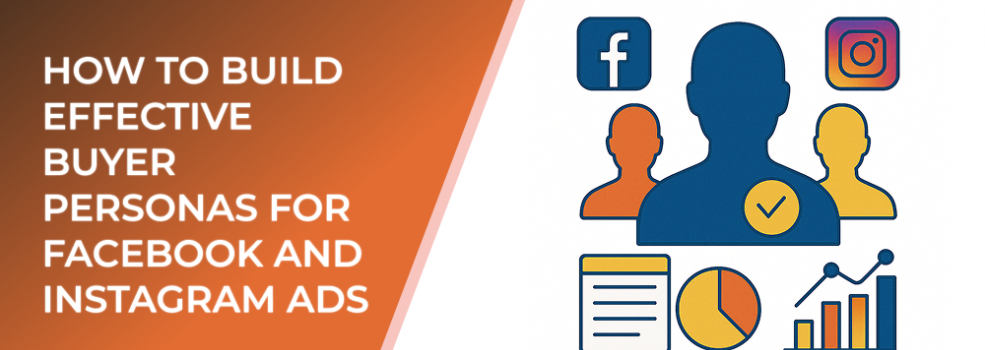In today’s digital marketing environment, targeting the right audience is the foundation of every successful campaign. Facebook and Instagram provide powerful targeting capabilities, but without a clear understanding of who your audience is, your ads may miss their mark. That’s where buyer personas come in.
Buyer personas are semi-fictional representations of your ideal customers based on real data, insights, and behavioral analysis. According to HubSpot, using buyer personas can make websites 2–5 times more effective and increase conversion rates significantly.
Why Buyer Personas Matter for Facebook and Instagram Ads
Facebook and Instagram’s algorithms are designed to optimize ad delivery, but they perform best when guided by accurate audience information. With well-developed personas, you can:
-
Craft ad copy that speaks directly to your audience’s motivations.
-
Choose visuals that match their lifestyles and preferences.
-
Use targeting settings more precisely to reduce wasted spend.
In fact, marketers who use personalized audience data see 55% higher engagement rates than those using broad targeting strategies.
Step 1: Collect and Analyze Data
Start by gathering insights from multiple sources:
-
Facebook and Instagram Insights: Review metrics like demographics, engagement patterns, and page activity.
-
LeadEnforce Analytics: Use LeadEnforce tools to segment and analyze user behavior, interests, and audience overlap.
-
Customer Data: Pull information from surveys, purchase history, and CRM systems.
The goal is to identify trends in age, gender, interests, geography, and online behavior.
Step 2: Identify Key Audience Segments
Segment your users based on shared characteristics. For instance:
-
Demographics: Age group, location, and occupation.
-
Psychographics: Values, goals, and challenges.
-
Behavioral Patterns: Purchase frequency, device use, and engagement types.
A study by Salesforce found that 84% of customers say being treated like a person, not a number, is critical to earning their business—making segmentation essential.
Step 3: Create Persona Profiles
Develop 2–4 comprehensive buyer personas to cover your core audiences. Each persona should include:
-
A name and short description (e.g., “Digital Savvy Entrepreneur”)
-
Demographics and background
-
Pain points and goals
-
Preferred social media platforms
-
Buying motivations and objections
Use these profiles to guide creative direction and ad targeting.
Step 4: Match Personas to Campaign Goals
Different personas respond to different messages. For example:
-
A budget-conscious shopper might respond best to discount-focused ads.
-
A tech-savvy professional might value innovation and quality.
-
A trend-driven millennial might prefer visually dynamic, story-based content.
Align each persona with specific campaign objectives to ensure consistency across every element of your ads—from visuals to messaging.
Step 5: Test and Refine Continuously
Buyer personas are not static. Use A/B testing and analytics to refine them over time. Monitor:
-
Engagement metrics
-
Click-through rates
-
Conversion performance
According to McKinsey, companies that regularly adjust their targeting using behavioral data experience 85% better sales growth and higher customer retention.
Step 6: Use LeadEnforce to Strengthen Persona Targeting
LeadEnforce’s audience targeting and analytics features allow you to gather real behavioral insights from multiple social media platforms. By using these tools, you can:
-
Identify new audience segments
-
Build custom and lookalike audiences
-
Optimize your campaigns with actionable data
Final Thoughts
Effective buyer personas are the bridge between data and creativity. They allow you to connect emotionally with your audience while making data-driven decisions that maximize performance. By combining insights from Facebook, Instagram, and LeadEnforce analytics, you can design campaigns that speak directly to the people most likely to engage and convert.
Related Articles from LeadEnforce:

